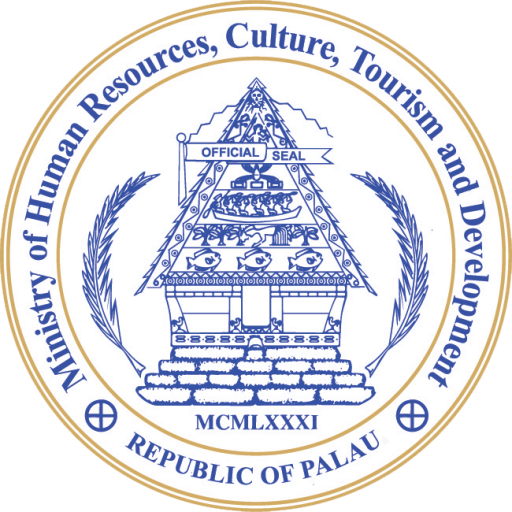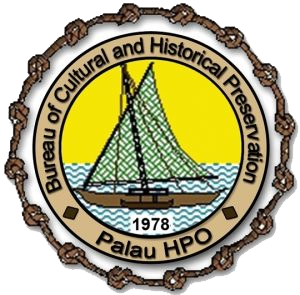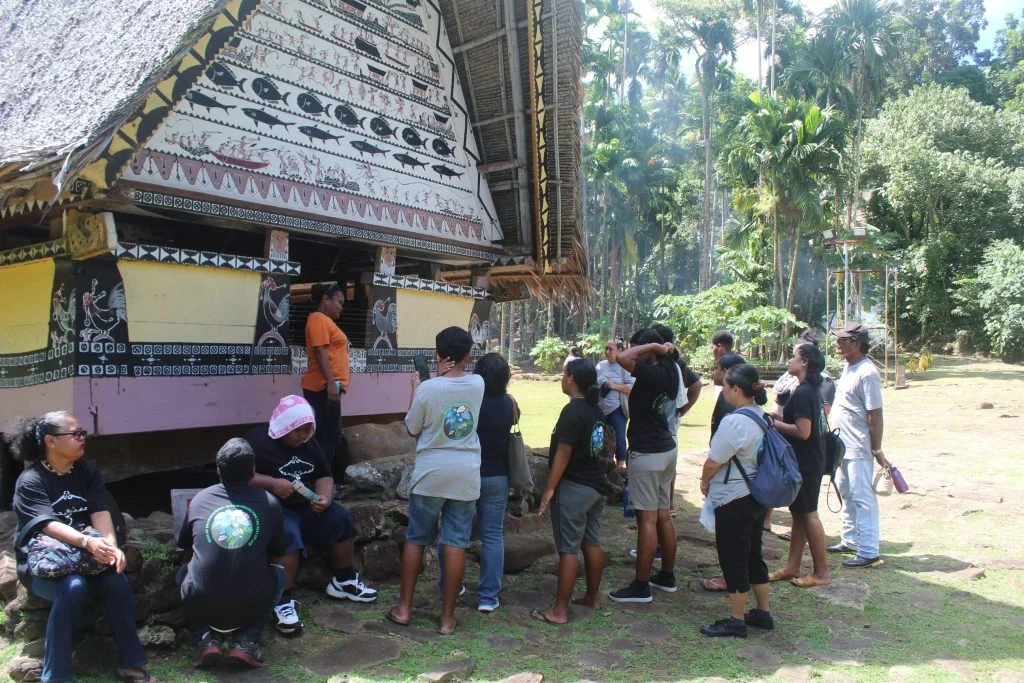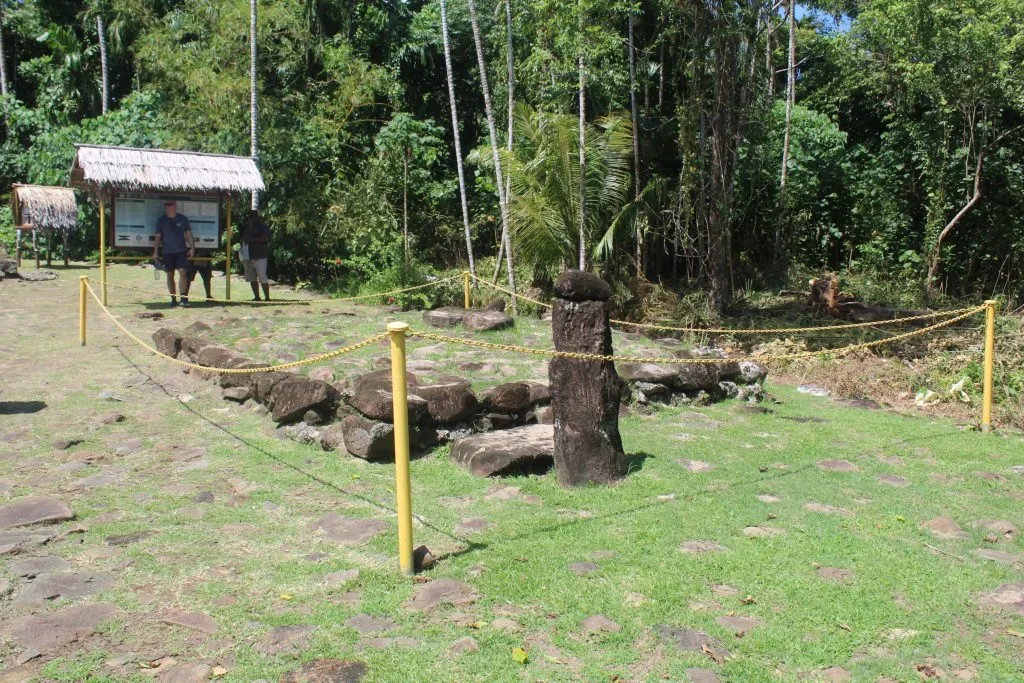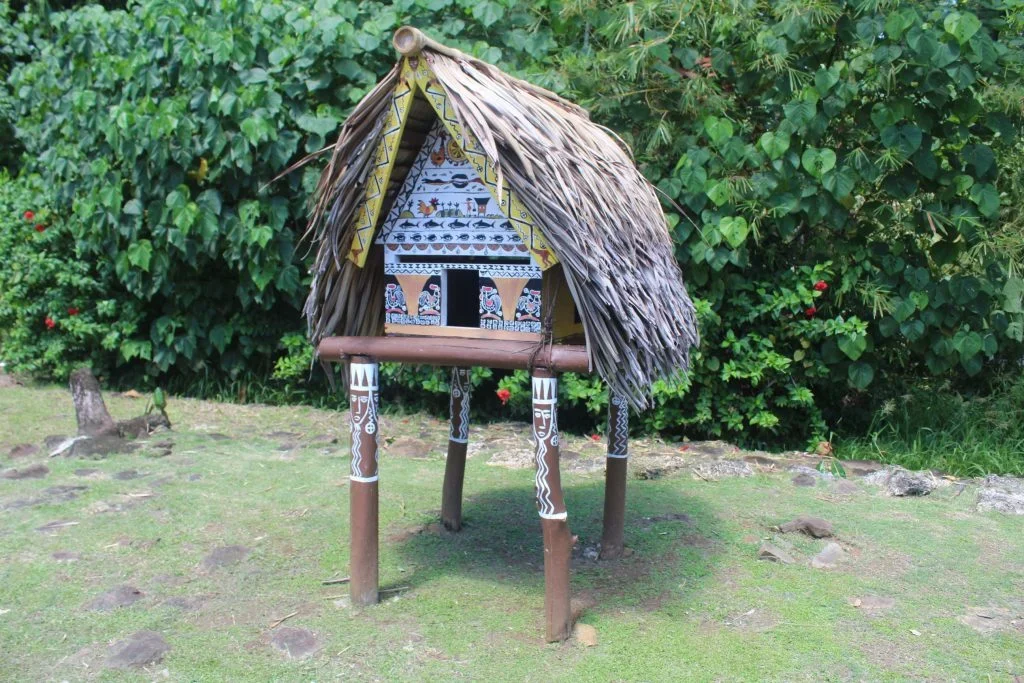Photo by McMichael Mutok Jr. (December 2022)
Bai er a Rengara Irrai
The Oldest Bai in Palau
- Airai
Site Type
Date Registered
Site No
Restored
In recognition of its significance, this site has been listed on the Palau Register of Historic Places on September 13, 1989. Through preservation, study, and interpretation, the site can serve to educate future generations concerning the historical and cultural heritage of the Palauan people.
Bai er a Rengara Irrai, located in Ordomel Village, is the oldest and last remaining traditional style Bai in Palau. The Bai presently listed on the Palau Register of Historic Places, as well as being listed on the American National Register during the Trust Territory Administration. Bai er a Rengara Irrai was renovated in 1984 and 1995. Several components of the old Bai is said to be almost 200 years old told by the village elders and now they are still used in the new structure.
Oral History
Oral history accounts with certainty that the founders of Irrai arrived from the north and were given permission to settle in an uninhabited area; they may have originally come from Peleliu where it is said “people were squeezed from breadfruit.” Several early account indicate that Irrai was well established and thriving by the late 1700’s. Assumptions that the founding of Irrai substantially predates in 1783 can be made, based on both oral and written history.
Bai er a Rengara Irrai was orignally located on a stone platform in an area referred to as Sebuu approximately 200 meters east of the present location. Oral history goes on to describe how long ago the Bai was dismantled and moved from Sebuu to its present site before western contact. The relocation was precipitated by the sudden death of two or three village elders in which it occurred.
The stone platform directly west of the main entrance to the Bai er a Rengara Irrai is known as Okeuid el Bad (Platform of 70 Stones). German Ethnographer Augustin Kramer referred in a report to the meaning as “70 Strong Men.”
On the platform’s center, one can find a boulder with a series of parallel grooves said to “show the finger markings of the spirit,” Medechiibelau. Directly northwest of the platform is the stone monolith said to be the seating place back rest for MedechiiBelau. The stone on top of the monolith is said to be Medechiibelau’s rooster.
The platform was used as a private meeting place “Ongeluul” for the village’s four main chiefs to discuss matters important to the safeguarding of the village and to settle disagreements arising in the ten chief meetings held within the Bai.
One of the most predominant features of the Bai er a Rengara Irrai central area, are the four stone paths and circle. Legend refers to the site as Btelulachang er a Uldekel (Entrance of Uldekel), describing the pivotal role Airai played in pre-contact intervillage warfare. The most surprising fact pertaining to the stone circle, is to that it is a late addition to the village, but that there is much conflicting oral information concerning it. Kramer’s map does not clearly show the convergence of the four stone paths, nor is the stone circle “resting place” indicated.
The “resting place” is also known as “Kambes” which village elders agree, probably derived from the English word compass and may indicate that the “resting place” circle was built after Western explorers and traders had visited the area around 1783.
Compiled by McMichael Mutok Jr.
Palau National Register of Historic Places
Bureau of Cultural and Historical Preservation
Sign up to receive the BCHP monthly newsletter.
Significance
The Bai, on occasion was also the scene of feasting and dancing. It was a symbolic tribute to the powerful individuals and group of a village, the four corner post (Saus) stand for the four important clans, their leader being the nucleus of the governing body for the village. The two door jambs at the gable ends represent the four leading women (ourrot). The remaining posts are dedicated to lesser clans and individuals. Those honored by the posts of the Bai were also subject to rewards as well as obligations in the functions of the community.
Consistent with rigidly prescribed pattern of social and political structure, decorative elements, already set in the style by long tradition, rarely varied to any degree. Creativity was usually expressed in the choice of story for the pictograph rather than revision or addition of figures and designs.
Lavishly decorated in both the exterior and interior, elaborate pictographic art on the gables and the beams in the interior, result in a vigorous, pleasing and dramatic unity. The walls, in short sections, fitted into posts on the outside, are free of designs and painted in solid bright yellow to enhance and contrast with the ornamented areas. All decorations are painted with earth colors of; black, white, red and yellow and are usually mixed with oil of the parinarium nut (Cheritem), common in Palau.
The style and technique through primitive, conveys a feeling of action whether the figure is seated or on the move. The zigzag conversation lines which look like lightning. The shape of the head, distorted and elongated with a bun effect of piled on the head are frequently held together with a long raod. (mangrove root comb). Further exaggerates the feeling of action. Stories were drawn and incised in flat relief and painted with the earth pigments.
Source
Airai State Government Brochure of Bai er a Rengara Airai.
Olsudong, Rita. Calvin T. Emesiochel. 2004. Inventory of Cultural and Historical Sites ad Oral Histories in Melekeok and Airai States. Vol. I: Inventory of Cultural and Historical Sites. Bureau of Arts and Culture (Historic Preservation Office) Ministry of Community and Cultural Affairs. Republic of Palau. Pp. 48.
Palau Register of Historic Places Nomination Form.
CODE OF CONDUCT
Given the importance of this site to Palauans in terms of their history and culture and the concerns that exist in regard to its future, those visiting the site should not engage in any type of behavior or activity that disturbs the integrity of this site or diminishes the respect that should be accorded to it.
PALAU HISTORIC PRESERVATION GUIDELINES
Because of the importance and sensitivity surrounding this and all historical registered sites, the Palau Historic Preservation Office would like to emphasize proper conduct for visiting a site through the following guidelines.
1) Remember that many sites include culturally sensitive areas and therefore behavior should be always be respectful.
2) Remember to take everything you bring to the site with you when you leave.
3) Do not remove anything from the site. Although you may not think something is significant to the site, all pieces make up the whole.
Location of Bai er a Rengara Irrai
Compiled by McMichael Mutok Jr.
Palau National Register of Historic Places
Bureau of Cultural and Historical Preservation
